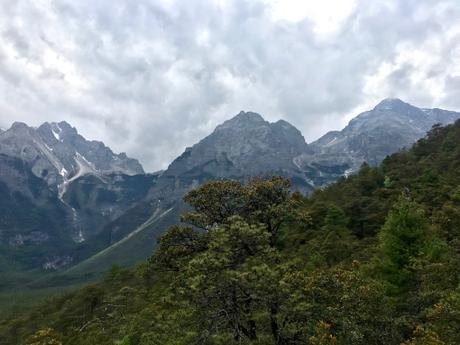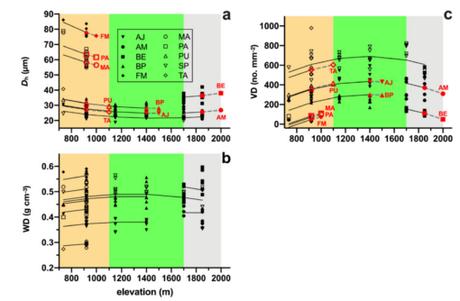
Just a quick post today, my last one for March. Like probably most of you, I’ve been trying to pretend to be as normal as possible despite the COVID-19 surrealism all around me. But even COVID-19 has shifted my research to a small degree.
But I’m not going to talk about the global pandemic right now (I can almost hear the collective sigh of relief). Instead, I’m going to go back to topic and discuss a paper that I’ve just co-authored.
Last year I went to China’s Yunnan Province where I met some fantastic colleagues at the Xishuangbanna Tropical Botanical Garden who were doing some very cool stuff with the variation in plant functional traits across environmental gradients.
Well, those colleagues invited me to participate in one those research projects, and I’m happy to say that the result has just been published in Forests.
Measuring the functional traits of different alpine trees species in the Changbai Mountains of far north-eastern China (no, I didn’t get to go there), the research set out to test how these varied among species and elevation.
Of course, one expects that different trees use different combinations of traits to survive the rigours of mountain life (high variation in temperature, freezing, wind, etc.), but generally speaking, you might expect things like xylem vessel diameter and density to change more or less monotonically (i.e., changing in a consistent manner as elevation rises or falls). This is because trees should adapt their traits to the local conditions as best they can.
Well, it turns out that that expectation is too simplistic. In fact, we found that different species modify certain traits in different combinations to adapt to local conditions, meaning that the monotonic expectation doesn’t always hold for individual traits. Basically this means that without the benefit of measuring multiple traits, you might incorrectly predict a trait value at a certain elevation assuming monotonic behavior.

Fig. 4 from Yang et al. (2020): Change in functional traits relative to elevation for 10 species. (a) Hydraulically weighted vessel diameter (Dh, m) initially decreased with increasing elevation, then stabilised and rose again at higher elevations. (b) There was no evidence that stem sapwood density (WD, g/cm3) changed with elevation. Predicted trait values at their putative upper elevational limits are shown in red. (c) There was evidence for a peak in vessel density (VD, mm2) at mid-range latitudes. Also shown in each panel are the approximate elevational bands of the three main forest types sampled: MCDBL = mixed conifer-deciduous broadleaf (peach); CONIFER = conifer (green); DRB = dwarf rock birch (grey).
The upshot of this is important, because it means that correlative species distribution models based on presence/absence alone could under- or over-estimate the predicted distribution under different climate scenarios. This is because individuals within a species can modify the combinations of their different adaptive traits to suit the local conditions.
Of course, mechanistic (physiological) species distribution models are probably going to give you a better predictive outcome, but even here we have to be careful not to assume monotonic behavior across different climate conditions. Important stuff, methinks!

